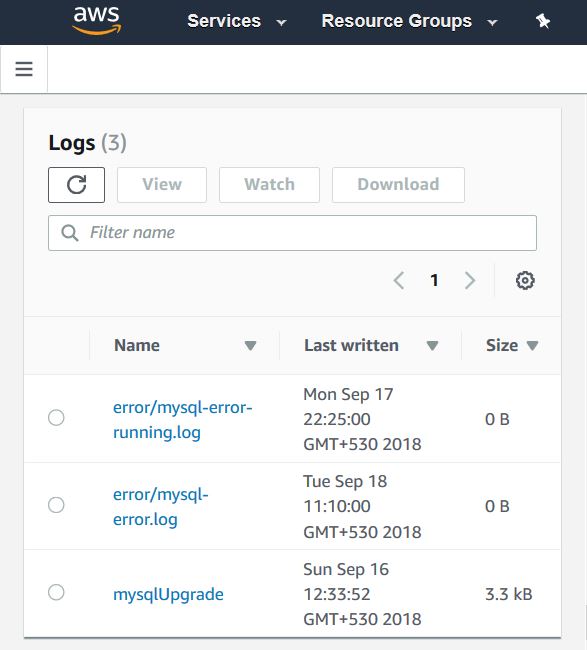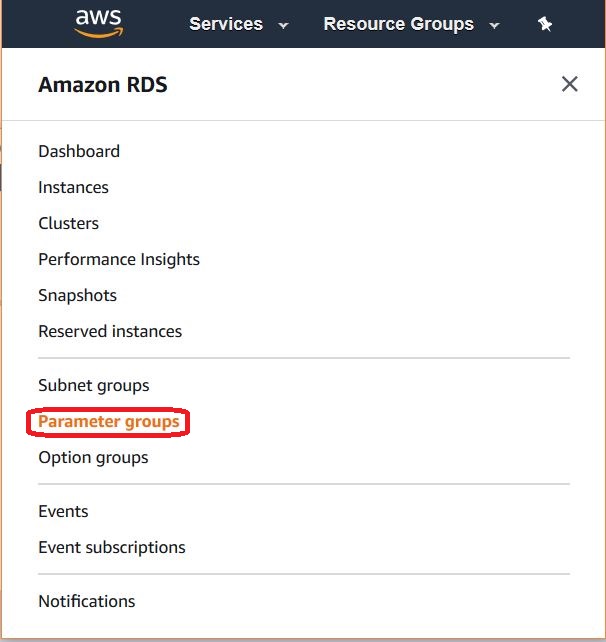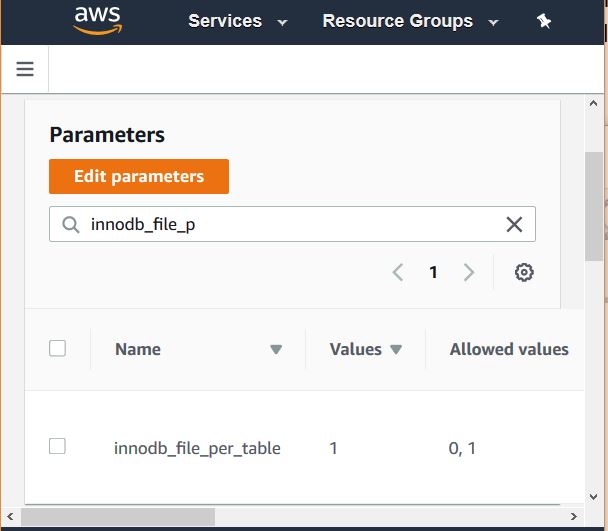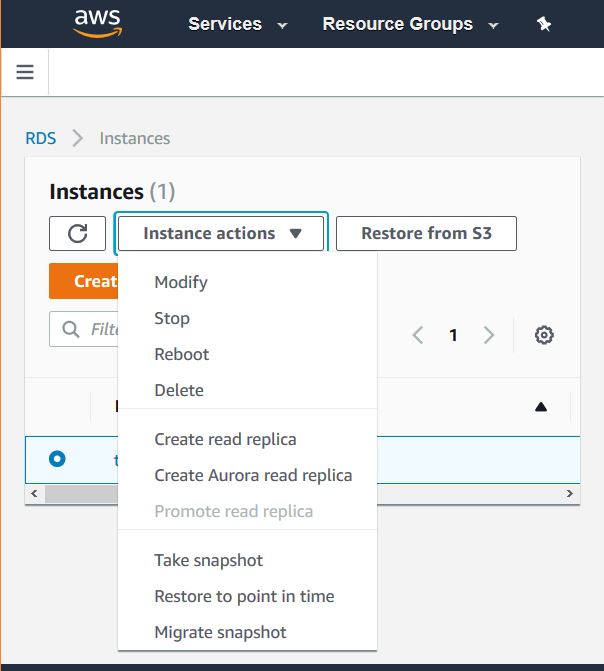
- Amazon RDS - Home
- Amazon RDS - Overview
- Amazon RDS - Environment
- Amazon RDS - Interfaces
- Amazon RDS - DB Instances
- Amazon RDS - DB Storages
- Amazon RDS - MS SQL features
- Amazon RDS - MS SQL creating DB
- Amazon RDS - MS SQL Connecting to DB
- Amazon RDS - MS SQL DB Export Import
- Amazon RDS - MS SQL DB with SSL
- Amazon RDS - MS SQL DBA Tasks
- Amazon RDS - Oracle Features
- Amazon RDS - Oracle Creating DB
- Amazon RDS - Oracle Connecting to DB
- Amazon RDS - Oracle DB Data Import
- Amazon RDS - Oracle DBA Tasks
- Amazon RDS - MariaDB Features
- Amazon RDS - MariaDB Creating DB
- Amazon RDS - MariaDB Connecting to DB
- Amazon RDS - MariaDB Data Import
- Amazon RDS - PostgreSQL Features
- Amazon RDS - PostgreSQL creating DB
- Amazon RDS - PostgreSQL Connecting to DB
- Amazon RDS - PostgreSQL Data Import
- Amazon RDS - MySQL Features
- Amazon RDS - MySQL Creating DB
- Amazon RDS - MySQL Connecting to DB
- Amazon RDS - MySQL DB Export Import
- Amazon RDS - MySQL DBA Tasks
- Amazon RDS - Multi-AZ Deployments
- Amazon RDS - DB Snapshots
- Amazon RDS - DB Monitoring
- Amazon RDS - Event Notifications
- Amazon RDS - DB Access Control
Amazon RDS - MySQL DBA Tasks
As with every other database, Amazon RDS MYSQL also needs DBA tasks to fine tune the database and do periodic health checks etc. But as the AWS platform does not allow the shell access to the DB, there are a limited number of DBA tasks that can be performed as compared to the on-premise installation of MySQL. Below is a list of common DBA tasks that can be performed in AWS RDS MySQL database and their descriptions.
Accessing Error Logs
The MySQL error log ( mysql-error.log) file can be viewed by using the Amazon RDS console or by retrieving the log using the Amazon RDS CLI. mysql-error.log is flushed every 5 minutes, and its contents are appended to mysql-error-running.log. The mysql-error-running.log file is then rotated every hour and the hourly files generated during the last 24 hours are retained.
Using RDS Console
Below there are links to two log files described above.

Using CLI
Using CLI the log files are published to CloudWatch Logs as a JSON Object.
aws rds modify-db-instance \
--db-instance-identifier mydbinstance \
--cloudwatch-logs-export-configuration '{"EnableLogTypes":["audit","error","general","slowquery"]}' \
--apply-immediately
Killing a Long Running Session or Query
Sometimes the DBA needs to kill a long running session or query which is not giving the result quick enough. This DBA task is done by first finding the process ID of the query and then using a RDS function to kill the query. The below commands are the examples.
# get the ID Select * from INFORMATION_SCHEMA.PROCESSLIST #Apply the Kill Function CALL mysql.rds_kill(processID);
Improve Crash recovery Time
We can improve the recovery time from a crash by setting a DB parameter called innodb_file_per_table. We can find this parameter in the RDS console as shown below.

Next we can Search for the parameter name as shown below.

Amazon RDS sets the default value for innodb_file_per_table parameter to 1, which allows you to drop individual InnoDB tables and reclaim storage used by those tables for the DB instance. This speeds up the recovery time from the crash.
Stop and Reboot DB
Stopping a DB, Rebooting it or creating snapshots etc can be done easily through RDS console as shown in the below diagram.
